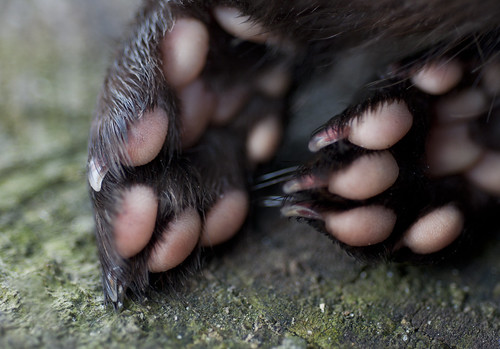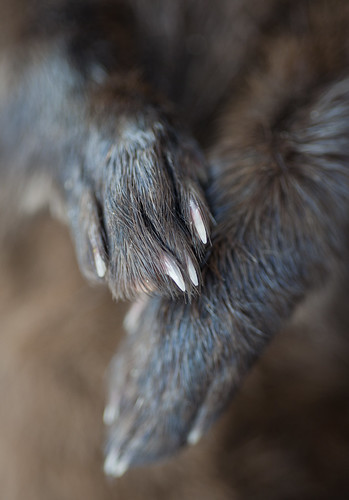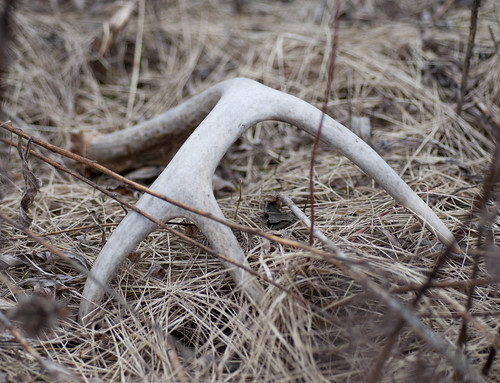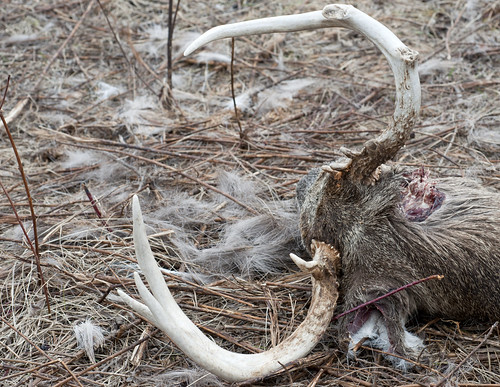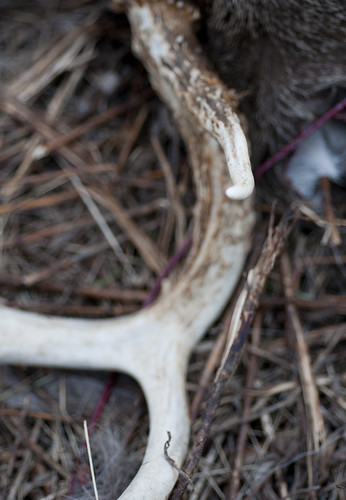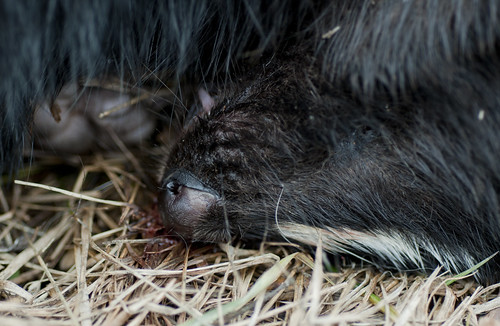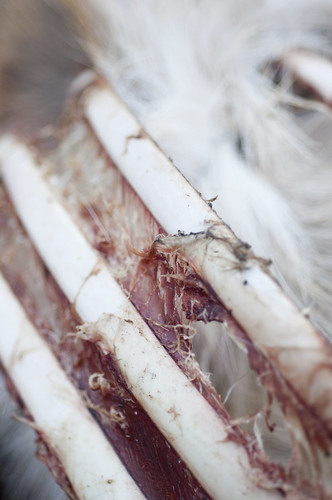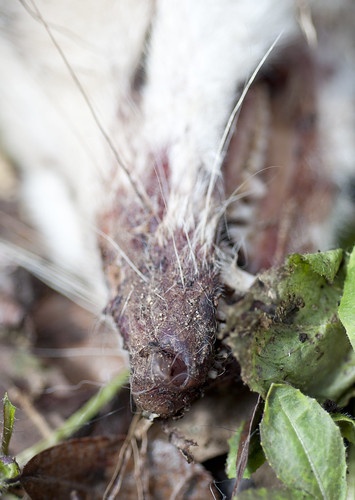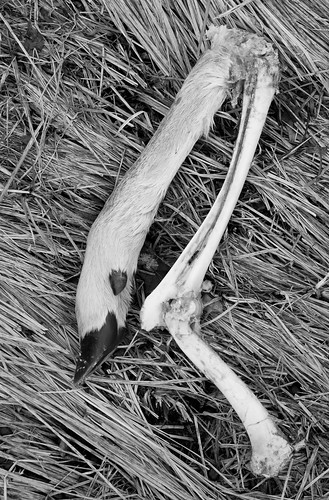For an animal so seldom seen, the American Mink (Neovison vison) seems to get hit by cars quite frequently. One reason for this may be that roads often follow and cross the paths of rivers and streams — prime mink habitat. I've seen several roadkill minks over the years, but haven't spent time photographing any until now. Last year, a mink was found dead in the road, downstate, and was brought to me. Today, I took a few minutes to photograph it — just the feet, as the animal's head had been crushed by a tire.
Friday, March 29, 2013
Friday, March 15, 2013
A Dead Animal Sampler
I am currently visiting my family in Ann Arbor! Unlike Marquette, there's no snow on the ground and the daytime temperatures are above freezing. The cardinals and red-winged blackbirds are singing, and with the springlike weather, many mammals are on the move. It was made painfully apparent, as on my way down US-23, I saw that the highway was littered with their corpses.
This morning I took a drive to the Matthaei Botanical Gardens for some shed antler hunting and general scavenging. I wasn't let down!
One of the first finds was an Eastern Cottontail. There wasn't much left to the rabbit's body — it had been preyed upon, likely by a coyote or a fox. All that remained was fur and its back feet, one of which I photographed, in-hand:
This morning I took a drive to the Matthaei Botanical Gardens for some shed antler hunting and general scavenging. I wasn't let down!
One of the first finds was an Eastern Cottontail. There wasn't much left to the rabbit's body — it had been preyed upon, likely by a coyote or a fox. All that remained was fur and its back feet, one of which I photographed, in-hand:
It's an interesting play on the concept of a "lucky rabbit's foot" — which, as it turns out, is a custom that has been around for thousands of years! Obviously, this cottontail wasn't so lucky, but the predator that fed upon it was.
The next find wasn't a dead animal — it was an antler!
Finding shed antlers is always exciting. I was able to spot this one from around fifty feet away, as it was an arc of gleaming white in the dull, dead grass. It's got four tines, and is of average size. It's also freshly shed — and there are no rodent gnaw marks! This find, however, was dwarfed by my next discovery.
As I looked for this antler's mate, which I never found, I noticed a turkey vulture circling overhead. I started off in that direction, and was soon met by an incredible sight:
This White-tailed Deer buck was a relatively recent death — likely no more than a few weeks old. His vitals had been ripped open by coyotes; his stomach contents were bared to the sky and his pink muscles glistened. The buck's eyes were mostly intact, but for whatever reason, his nose and ears had been bitten off by coyotes. One leg was missing entirely. His antlers, though, were pretty amazing.
Three tines on the right antler were broken, likely during the rut. The same antler also had some neat little kickers coming out near the base, as well as an unusually wide main beam. The tines on the left antler, including the eye guard, were quite long.
Back in 2011 when I found March Buck, I had needed assistance in removing his head — this time, I was more than capable of doing it myself! As I cut it off, the turkey vulture circled overhead, patiently waiting for me to leave. This buck's head will be returning with me to Marquette; it will be interesting to see how old this deer was. I'm unsure of his cause of death — it's possible he was struck by a car, then limped into the field to die.
My adventure didn't end there, however. The next find was a small Striped Skunk, found dead in the same field. It looked to be only a day or so dead. It's very possible that the skunk died of rabies; I left the body alone and continued on my way.
After dropping off the (very heavy) buck head and shed antler in my car, I continued to explore. Deciding it might be interesting to see if March Buck's skeleton was still there, I headed in that direction. I didn't find any of his bones — but I did find the carcass of a doe. She was laying in almost the exact same place that I found March Buck: beneath the lone cedar tree.
The doe's state of decay was nearly identical to that of March Buck. But even stranger — and this was downright uncanny — was that she, too, had something wrapped around her foot. Unlike March Buck's piece of plastic tubing, this doe had a guy line strangling her hind leg, just above the dew hooves. It had tightened all the way down to the bone — which was broken.
I have little doubt that this impairment caused her death. It was a disturbing, grisly sight.
At that point, I started the long trek back to the parking lot. Along the way, I spotted the body of a Virginia Opossum beneath a tree:
It was a relatively small animal, and looked to have been dead for at least a week or so. In typical opossum fashion, the lips had curled away from the teeth, making for a gruesome, deathly grimace.
My last find of the day was the lone foreleg of a deer.
Labels:
Ann Arbor,
antlers,
bones,
buck,
deer,
eastern cottontail,
matthaei botanical gardens,
Michigan,
opossum,
rabbit,
skunk,
Washtenaw County
Sunday, March 3, 2013
From the Collection: Badgers!
Winter still has its icy, snowy grip on Michigan's Upper Peninsula, so back to the collection we go! Today's topic is the American Badger, Taxidea taxus — not to be confused with the oft-erroneously represented Eurasian Badger, Meles meles, nor the internet-famous Honey Badger, Mellivora capensis.
Like the minks* from the previous collection post, the badger is also a member of the weasel family, Mustelidae. Striking facial markings aside, however, the badger is quite different in appearance from most mustelids. Its body is flat and stocky, and its skull is stout and raccoon-like. Badgers have shaggy fur, a short tail, plenty of loose skin, and long, sharp claws for digging. They carry a fierce reputation, but they are also shy creatures. Unlike the Eurasian Badger, the American Badger is a rather solitary animal; it prefers open grasslands for its habitat. Its southeasterly range does not extend much further than Michigan, but the badger thrives in the prairie and desert habitat to the west and southwest.
I have two American Badger skulls in my collection. Both came from the same source — a taxidermist's shop in the Keweenaw Peninsula. I have a feeling that mammals were not his strong point: he swore the skulls belonged to fishers (Martes pennanti)**, and that "he shot them himself." Neither was professionally cleaned, and they look as if they sat outside for a number of years. With cracks and missing teeth, neither skull is in great condition, but they were only a few dollars apiece, and both have character.
The first badger skull belongs to a middle-aged individual. Though the skull has a strong sagittal crest, the sutures on the rostrum were not yet fused at the time of the animal's death. Obviously, this badger met its end by being shot in the head. Bullets, just like the tire of a car, do an incredible amount of internal damage, and seldom does a bullet leave just a clean, circle-shaped hole in its wake:
The reverse side of the skull shows a gaping hole, though this is not quite as dramatic as the skull's ventral view:
In addition to the cracks spiderwebbing along the braincase, the force of the bullet blew out a large portion of the skull's underside. It's a very quick, violent way to go; it's most likely the badger was trapped and then shot at close range.
The second skull, though missing two of its canine teeth, is in better condition than the first:
Like the minks* from the previous collection post, the badger is also a member of the weasel family, Mustelidae. Striking facial markings aside, however, the badger is quite different in appearance from most mustelids. Its body is flat and stocky, and its skull is stout and raccoon-like. Badgers have shaggy fur, a short tail, plenty of loose skin, and long, sharp claws for digging. They carry a fierce reputation, but they are also shy creatures. Unlike the Eurasian Badger, the American Badger is a rather solitary animal; it prefers open grasslands for its habitat. Its southeasterly range does not extend much further than Michigan, but the badger thrives in the prairie and desert habitat to the west and southwest.
I have two American Badger skulls in my collection. Both came from the same source — a taxidermist's shop in the Keweenaw Peninsula. I have a feeling that mammals were not his strong point: he swore the skulls belonged to fishers (Martes pennanti)**, and that "he shot them himself." Neither was professionally cleaned, and they look as if they sat outside for a number of years. With cracks and missing teeth, neither skull is in great condition, but they were only a few dollars apiece, and both have character.
The first badger skull belongs to a middle-aged individual. Though the skull has a strong sagittal crest, the sutures on the rostrum were not yet fused at the time of the animal's death. Obviously, this badger met its end by being shot in the head. Bullets, just like the tire of a car, do an incredible amount of internal damage, and seldom does a bullet leave just a clean, circle-shaped hole in its wake:
The reverse side of the skull shows a gaping hole, though this is not quite as dramatic as the skull's ventral view:
In addition to the cracks spiderwebbing along the braincase, the force of the bullet blew out a large portion of the skull's underside. It's a very quick, violent way to go; it's most likely the badger was trapped and then shot at close range.
The second skull, though missing two of its canine teeth, is in better condition than the first:
This skull came from a much older animal. Though its teeth were not in bad shape at the time of its death, its sutures are completely fused. It's a more robust skull than the first, and measures 5.0" (as compared to the bullet-damaged skull's 4.75").
Here are a few side-by-side views of these two badger skulls:
 |
| click for larger view |
 |
| click for larger view |
 |
| click for larger view |
Lastly, here is a photo showing the size difference between last entry's mink skull and a much-larger badger skull:
* The identity of the second mustelid skull from the previous entry has not yet been confirmed! There have been a few guesses but the mystery still remains. If you haven't already, share the link with someone who knows their mammals well!
** The fisher will be the next skull I showcase. It, too, was the victim of mistaken identity!
Subscribe to:
Comments (Atom)

